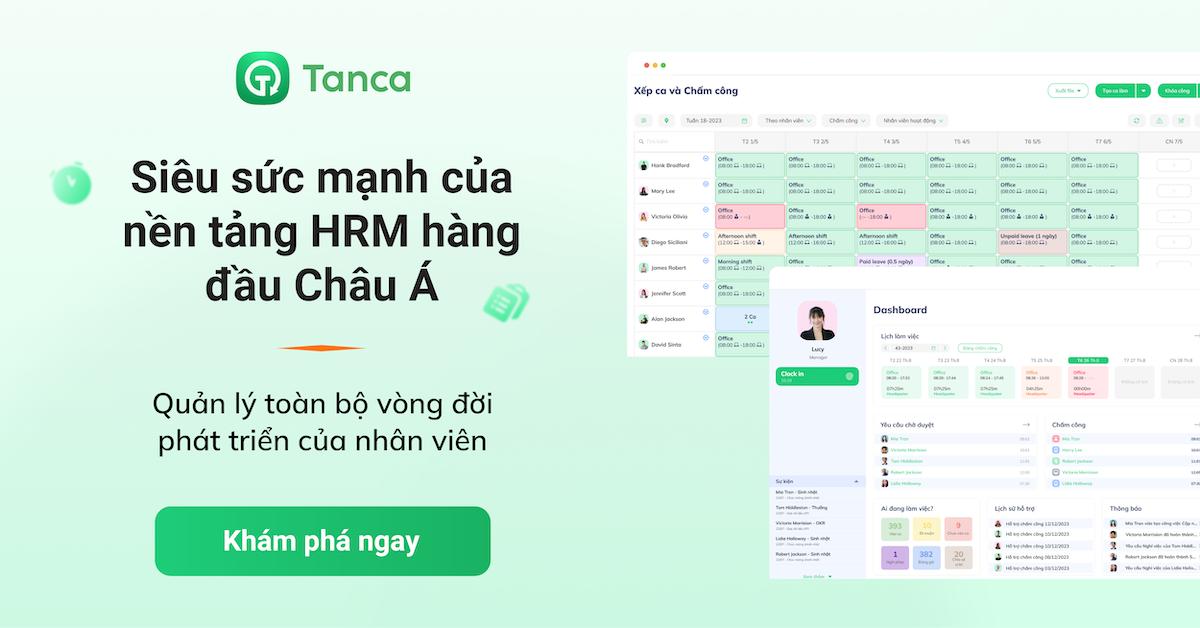Business leverage is a double-edged sword that can optimize revenue while posing risks to the business. So, how can financial leverage be used effectively, and how are DOL and DFL calculated based on basic EPS and EBIT? Discover more in this article by Tanca.
What is business leverage?

In financial management, "business leverage" refers to a company's use of assets with fixed operational costs or fixed financial debt to increase profits for the owners.
Business leverage operates on the principle: a small change in cost and financing use will lead to a significant change in the company's business efficiency.
Types of Business Leverage
Financial Leverage
Concept
Financial leverage is a term describing how a company uses a combination of debt and equity financing.
Financial Leverage Degree
The principle of leverage is that a small change in operating profit will lead to a larger change in the company's EPS (earnings per share). This consolidation is called the Degree of Financial Leverage (DFL).
Financial Leverage Formula
Where:
EPS: Earnings Per Share = (Net Profit - After-tax Preferred Share Dividends) / Total Common Shares Issued
I: Interest Expense
Q: Sales Volume
V: Variable Cost per Unit
F: Fixed Costs
Importance of Financial Leverage
Leverage is an effective tool used by companies to increase after-tax returns on equity.
The degree of leverage is reflected in the company's debt ratio. Companies with a high debt ratio mean high leverage and vice versa.
However, just a small change in earnings before interest and taxes will lead to a larger change in your after-tax earnings ratio.
If the income generated from total assets is not large enough to cover the interest expenses, then after-tax earnings per share will decrease.
The Relationship Between Financial Risk and Leverage
Financial risk is the risk that owners must bear due to fluctuations or uncertainty of after-tax earnings per share when the company uses borrowed capital. As mentioned above, if not wisely used, leverage will become a brake on the growth of after-tax profits.
Operational Leverage
Concept
Operational leverage or action shows how a company uses fixed costs versus variable costs.
Where:
Fixed costs are expenses that do not change with changes in business production. These costs include depreciation, insurance, some utility costs, and management expenses.
Variable costs are expenses that change as the company adjusts its business production. This includes raw material costs, direct labor, sales costs, part of utility and management expenses.
Degree of Operational Leverage
The impact of leverage is as follows: a change in revenue can amplify a larger change in EBIT profit. This increase is called the degree of leverage or DOL.
Calculating the Magnitude of Business Leverage
Where:
EBIT: Operating Profit (earnings before interest and taxes) = total revenue - total variable costs - total fixed costs
Q: Sales Volume
V: Variable Cost per Unit
F: Business Fixed Costs
DOL represents the ratio of change in profit when revenue changes. The larger the DOL, the greater the amplification of revenue change in profit.
Importance of Operational Leverage
This leverage is a tool that managers use to predict their profitability when driving sales. Managers will build plans to use costs reasonably to increase the company's operating profit.
The Relationship Between Business Risk and Operational Leverage
Many factors lead to business risk, including:
- Market competition
- Sales volume of the product
- The cost structure of business production
- Product diversity
- Market demand for the product
Degree of Operational Leverage Used by the Company
As noted above, operational leverage is an effective tool to increase profits, but it also contains business risks. When using operational leverage, earnings before interest and taxes are very sensitive to changes in product sales volume.
Combined Leverage
Concept
Combined leverage is the use of both operational and financial leverage to increase shareholder profit.
Degree of Combined Leverage
When combining operational and management leverage, a small change in sales will amplify a larger change in EPS (after-tax earnings). This consolidation is called combined leverage (DCL).
Combined Leverage Formula
EBIT: Profit before taxes & interest
EPS: After-tax Earnings per Share
I: Interest Expense
Q: Sales Volume
V: Variable Cost per Unit
F: Fixed Costs
Significance of Combined Leverage
The degree of combined leverage indicates: When a company invests in fixed assets with borrowed capital, it determines how the profit for the owner changes when sales change.
Examples of Business Leverage
Financial Leverage Example
Company ABC wants to calculate the degree of financial leverage at a sales volume of 300,000 units, knowing that fixed costs are 280 million, variable costs are 84,000/unit, and the selling price is 100,000/unit. The interest rate the company has to pay is 60 million, and the tax rate is 20%.
EBIT = 30,000 x (100,000 - 84,000) - 280,000,000 = 200,000,000 VND
DFL = 200,000,000 / (200,000,000 - 60,000,000) = 1.43%
This means that a 1% change in income per share will lead to a positive change of 1.43% in income per share (if income increases by 1%, then EPS will increase by 1.43% - if income decreases by 1%, then EPS will decrease by 1.43%).
Combined Leverage Example
If DCL = 2, a 1% change in sales will change EPS by 2% (If sales increase by 1%, EPS will increase by 2% - if sales decrease by 1%, EPS will decrease by 2%).
An Example of Operational Leverage
Company ABC wants to determine its operational leverage for a sales volume of 70,000 units, knowing that fixed costs are 120 million dollars, variable costs are 21,000 dollars/unit, and the selling price is 54,000 dollars/unit.
DOL = 70,000 x (54,000 - 21,000) / 70,000 x (54,000 - 21,000) - 120,000,000 = 1.05%
This means that a 1% change in revenue will lead to a positive change of 1.05% in EBIT (if revenue increases by 1%, then EBIT increases by 1.05% - if revenue decreases by 1%, then EBIT decreases by 1.05%).
Diagram of the Relationship Between the Three Types of Business Leverage
The diagram above clarifies the operation and impact of the three types of business leverage and three factors: Revenue - Operating Profit (EBIT) - Earnings Per Share.
Managers need to understand this model to determine the magnitude of business leverage depending on which factor, to avoid confusion about the function of leverage types and use them appropriately and purposefully.
Benefits of Business Leverage
The main benefit of leverage is that you can do more with less cost, maximizing performance in all areas of life.
Building Wealth: The power of leverage helps increase profits for your financial investments, allowing you to build sustainable wealth.
Growing Your Business: Leverage in business allows you to save time and money, seek new efficiencies, receive new information, and take your business to new heights.
Increasing Productivity: Leveraging time, connections, and more helps you work more effectively, increase productivity, and achieve goals faster.
How to Effectively Use Leverage in Business
To use business leverage to enhance the growth rate of the company, the first factor managers need to focus on is cash flow. Because the principle of leverage is how companies use costs and borrow capital effectively.
To make leverage work, focus on using leverage that generates the most net profit for the company.
Keep in mind that using leverage has a significant impact on how a business operates, so as a business owner, you must calculate carefully and anticipate your choices to manage the business timely and respond to risks timely.
For example, if a company uses financial leverage but does not use borrowed capital effectively, if the profit before interest and taxes generated is less than the interest to be paid, this will lead to a faster decrease in the return on equity. Without countermeasures, it can lead to severe losses.
Tanca Business Management Software
Besides leverage in business, companies must also apply software technology to operations and management if they want to achieve exceptional growth. With the Tanca comprehensive business management software, managers can directly monitor the company's operational situation through various detailed and visual reports:
- Change report, personal information
- Progress report of work/projects
- Report on business situation and results
- Additionally, when using the Tanca CRM module, business operations will be simpler and smoother than ever thanks to:
- Standardizing all processes within the company
- Easily track your progress
- Be more proactive in your work
- Revenue and costs are stored in the system for easy compilation
- Customer information and data are available 24 hours a day, 7 days a week
We hope that this article has helped you understand business leverage and apply it to your business to boost growth. For free consultation on business management software and sales management Tanca, please contact us through the hotline.











